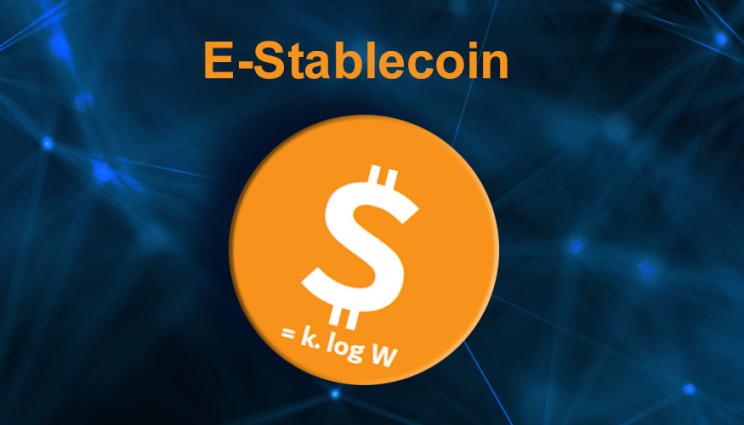
Researchers from Lawrence Livermore National Laboratory (LLNL) have devised a physics-based cryptocurrency that links electrical energy and blockchain technologies in a new way.
This new blockchain concept, dubbed “E-Stablecoin,” could allow electricity to be transmitted between users who are spread around the world, without the need for interconnecting wires or a grid-based transmission system. The work solves critical digital asset stability problems and is the first cryptocurrency token design that is both collateralized by a physical asset and fully decentralized because it is secured by the laws of statistical mechanics.
The research appears in the journal Cryptoeconomic Systems.
Digital assets and cryptocurrencies (such as Bitcoin) have seen explosive growth since their inception in 2009, prompting President Biden to sign an executive order on ensuring responsible development of digital assets. The executive order notes that digital assets have profound implications in areas including “data privacy and security; financial stability and systemic risk; crime; national security; the ability to exercise human rights; financial inclusion and equity; and energy demand and climate change.” Accordingly, the executive order calls for coordinated interagency efforts on the responsible development of digital assets, including technological advancements and payment innovations.
The new LLNL cryptocurrency concept is a step toward implementing responsible digital assets that move beyond just the digital world and are instead tied to the physical world in more tangible ways. E-Stablecoin takes advantage of modern advancements in thermodynamics to transmit energy as a form of information.
The seeds of this idea date back to the “Maxwell’s Demon” thought experiment posed in 1867 by James Clerk Maxwell. In this thought experiment, a “neat-fingered demon” could allegedly break the second law of thermodynamics at the nanoscale – a claim that led to a flurry of controversy over the course of a century, ultimately elucidating a deep connection between energy and information.
In their new paper, Lawrence Livermore researchers Maxwell Murialdo and Jon Belof have detailed how this connection between energy and information allows for the creation of a cryptocurrency token that is directly backed by and convertible into one kilowatt-hour of electricity. While it requires the input of one kilowatt-hour of electricity to mint an E-Stablecoin token, that digital token can later be destroyed to extract back out one kilowatt-hour of usable electricity. Thus, the price of one E-Stablecoin token is pegged to the price of one kilowatt-hour of electricity in a manner that is robust, stable and trustless (a system that does not depend on an institution or third party for a network or payment system to function).
As Murialdo explained: “Any anonymous party can mint an E-Stablecoin token with the input of roughly one kilowatt-hour of electricity. They can then transact with the digital token like any other cryptocurrency, or even turn it back into usable electricity – all without the need for electrical power companies, electrical transmission lines, permissions or authorities. It is a trustless system from top to bottom.”
A key problem that plagues many cryptocurrencies (such as Bitcoin) is the tendency for wild fluctuations to arise in the cryptocurrency’s exchange price. These extreme price fluctuations magnify risks and discourage consumer transactions, long-term smart contracts and other applications built on the blockchain.
One solution is to create “stablecoins,” which are cryptocurrency tokens that are specifically designed to hold stable value relative to external assets. Stablecoins can peg their token value to the value of an external asset like one U.S. dollar or one gram of gold by making the token directly exchangeable for the asset. However, to date, pegging the value of a cryptocurrency token to the value of a physical asset has required trust in a centralized authority (who can maintain and disburse the physical asset). Requiring trust in a centralized authority introduces a potential failure point that is antithetical to the decentralized ethos of cryptocurrencies.
E-Stablecoin is the first stablecoin concept to eliminate this failure point, a feat made possible by using the interplay of thermodynamics and information theory. In the future, E-Stablecoin may help to distribute electricity to remote locations that are not connected by an electrical grid system, or combat climate change by enabling intermittent, renewable energy to be transmitted to the places where it is needed most for efficiency.
“Through thermodynamic reversibility – to the extent that it is allowed by a modern understanding of statistical mechanics – we envision a future blockchain that is not only rooted in real-life assets like energy usage, but also is a more responsible steward of our natural resources in support of the economy,” said co-author Belof.
The E-Stablecoin concept was developed via the LLNL Laboratory Directed Research and Development program.
Risk Warning: Cryptocurrency is a unregulated virtual notoriously volatile asset with a high level of risk. Any news, opinions, research, data, or other information contained within this website is provided for news reporting purposes as general market commentary and does not constitute investment or trading advice.




